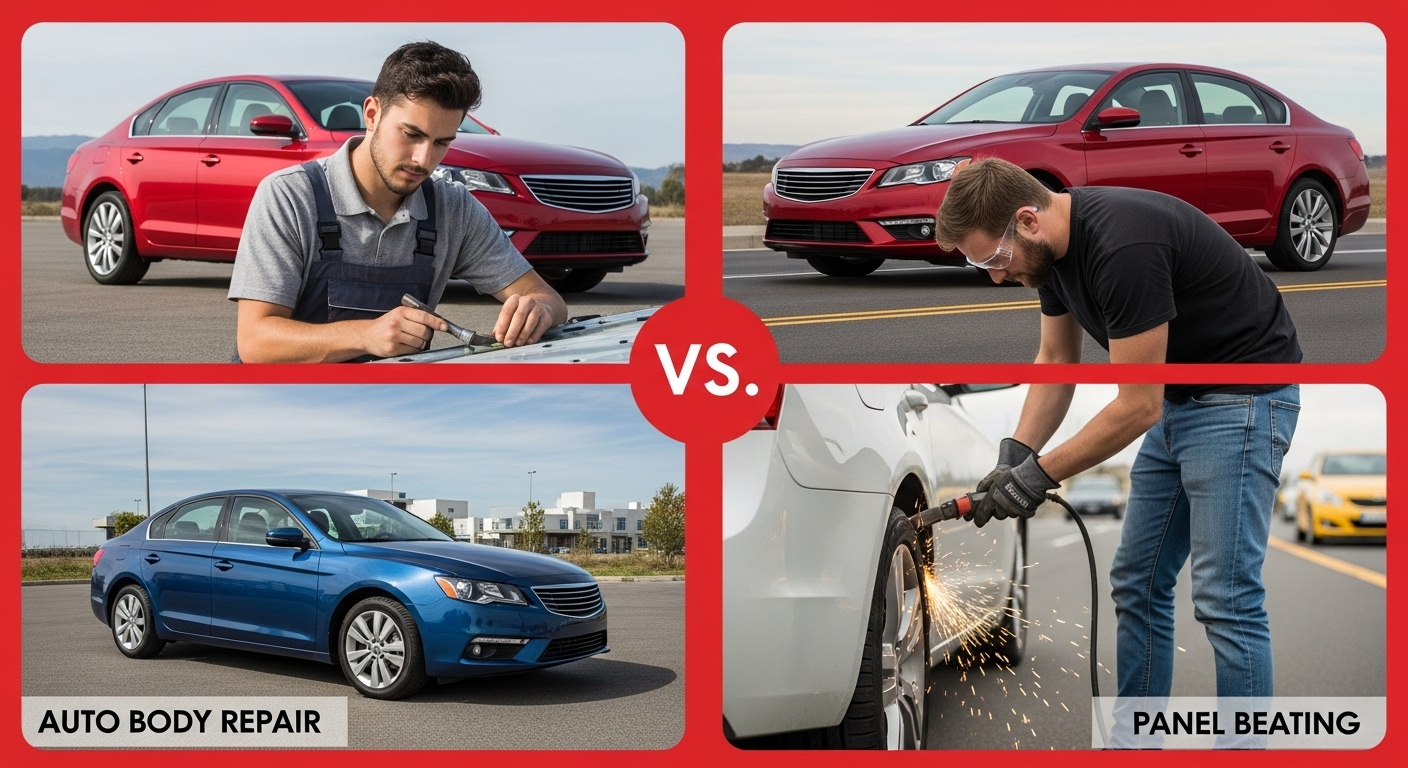
Auto Body Repair Vs Panel Beating: What's The Difference?
When your vehicle suffers damage, whether by a collision, hailstorm, or a shopping cart in the parking lot, you will likely need professional assistance to get it back in shape. Two commonly used terms in the industry are “auto body repair” and “panel beating.” You might be scratching your head and wondering, what’s the key difference between these two, and what’s the best for vehicle restoration? While they are closely related, each service has a distinct scope and purpose in the world of car maintenance. This guide will help you understand the differences and make informed decisions about your vehicle’s care.
What is Auto Body Repair?
Auto body repair refers to the process of restoring the damaged car to its original condition. It includes fixing dents, painting, and full structural restoration after a major collision on the road. The focus is on restoring the vehicle’s appearance, maintaining safety, and structural integrity.
Auto Body Repair Services
Bumper repair and replacement
Paintless dent removal
Auto painting
Panel repair and replacement
Collision repair
Rust repair
Detailing
Glass replacement
Chassis alignment and replacement
Auto body repair mechanics use advanced machinery and computerized systems to ensure precision in every vehicle repair task. These types of repairs aim to restore both the appearance and functionality of the vehicle.
What is Panel Beating?
Panel beating is the process of repairing or replacing damaged car panels. It involves fixing minor dents to major structural repairs using the industry-specific tools and techniques, including welding, filling, and sanding, to achieve a smooth, factory-like finish.
Panel Beating Services
Removing dents and scratches
Rust damage
Replacing panels
Structural repairs
Painting and finishing
The panel beaters have access to extensive knowledge and the necessary tools to repair vehicles, from light cosmetic dents to major prangs.
When do you Need Auto Body Repair?
Any damage, including dents, scratches, broken parts, frame misalignment, and structural issues.
You need full restoration after a major road accident.
When you experience the stains of fluid leakage under your car.
Cracks, chips, or other damage to the windshield and windows of your vehicle.
If you hear any strange noises from your car while driving.
When you experience rust and corrosion, paint peeling, cracked bumpers, and damaged lights on your car, it's time to take action.
When do you Need Panel Beating?
The damage is mainly physical and is on the vehicle’s exterior, including doors, fenders, and bonnet.
You are referring to traditional bodywork methods, including welding, grinding, and pulling the metal of the car back to its original condition.
Structural issues: When metal is dented, bent, creased, or crushed, it requires repair or replacement assistance.
Rust can weaken the panels of your car.
A single side panel was hit in the parking lot.
No major paint damage.
What are the Industry Standards for Auto Body Repair?
The auto body repair team follows industry standards to ensure the vehicle works the same as before the damage occurred.
Adherence to Manufacturer Guidelines
All repairs adhere to the original equipment manufacturer's (OEM) specifications to ensure the vehicle's high-end performance and safety.
Use of Quality Parts
The auto body repair team should use the genuine OEM parts or certified aftermarket components to ensure a factory-quality finish.
Structural Safety
The repairers restore your vehicle's structural integrity, ensuring that all components are repaired or replaced under industry standards.
Use Industry Standard Tools
The auto body repair team is skilled in using frame straightening machines, spot welders, computerized systems, and other tools to deliver repairs that meet industry standards.
What are the Industry Standards for Panel Beating?
Panel beaters in Australia are expected to follow the strict industry standards to ensure high-quality and durable services.
Follow the Manufacturer's Specifications
Panel beaters apply the manufacturer's recommended welding, bonding, and riveting techniques to repair panels.
Quality Finish
A professional panel beater ensures a seamless paint finish, matching the original paintwork of the car.
Safety and Structural Integrity
The panel beater ensures that all the components and panels of the car are aligned perfectly and function correctly.
Quality Control and Inspection
The panel beaters perform road testing and inspect the vehicle from the interior and exterior to ensure repairs meet industry standards.